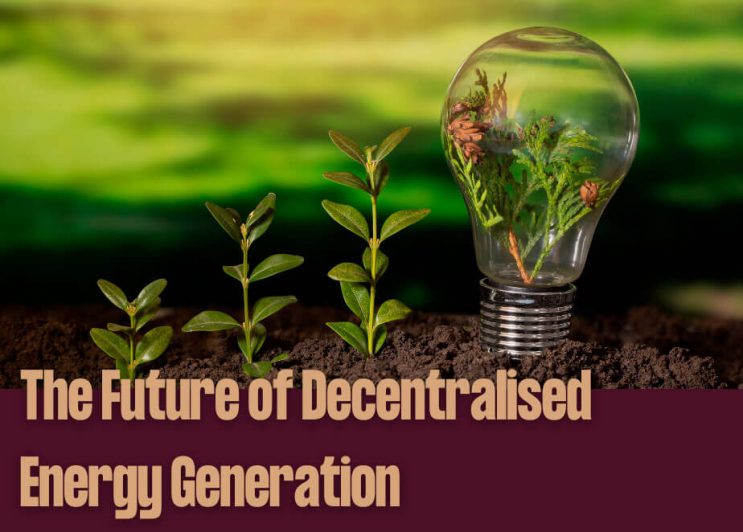The shift toward Renewable energy

10,000 Years of stable climate
For about 10,000 years or so, since the end of the last glaciation period, the planet we call home has enjoyed an astonishingly stable climate, never varying by more than one degree Celsius above or below the long-term average. It’s precisely this stability that allowed us human beings to ditch our nomadic lifestyles and start putting down some roots. Quite literally. Knowing, with a high level of certainty, what kind of weather and temperature each season would bring us meant we could engage in agriculture and animal domestication and start building societies with more substantial shelters that were designed to stay in a single location and last for a long time. That early model essentially remains the same today.
Gases from human activities emitted into the atmosphere
The difference now though, is that food production, and for that matter just about everything else we do in the modern world, is no longer the result of manual and animal labour. It’s driven by huge industrial machinery, predominantly powered by fossil fuels. Over the last 200 years, burning those fuels has released ever-increasing amounts of carbon dioxide into our atmosphere. Modern civilisation now spews out more than forty billion tonnes of the gas every year. About two billion tonnes of methane gas are also released annually from more than a billion cows reared for the global beef industry. Another two billion tonnes of nitrous oxide go up into the air each year as a result of the overuse of nitrogen fertilizers on agricultural land. The shape of all those gas molecules just happens to make them extremely good at capturing photons of infrared light radiating away from the earth’s surface, which would otherwise escape harmlessly back out into space. Collectively, we know them all as greenhouse gases and they’re like a blanket thrown over the planet.
Average global surface temperature surge
The result is a rapidly warming atmosphere. The average global surface temperature is already more than 1.2 degrees Celsius above pre-industrial levels. That’s a bigger variance than at any time since the last ice age, and the rate of increase is accelerating. Mid-latitude regions are already experiencing crippling heatwaves and droughts as a result. But physics tells us that for every 1 degree Celsius of warming, our atmosphere retains 7% more moisture. That means some of those regions are also experiencing extreme flash flooding. When those torrential rains fall on rock-hard, dried-up ground, the water doesn’t get absorbed to replenish the earth. It simply cascades off the surface, stripping essential nutrients from the soil and carrying them away to waterways and eventually out to sea. So, the land becomes less and less fertile and the agriculture that those societies rely upon becomes practically impossible.
A positive feedback loop
The polar regions are warming as much as three times faster than the global average. Arctic Sea ice is disappearing at an alarming rate, allowing the energy of the sun to be absorbed into the exposed water, which in turn causes more sea ice to melt. It’s what scientists call a positive feedback loop, but there’s really nothing positive about it. Very high Arctic temperatures are melting the Greenland Ice sheet. The melting ice sheet deposits billions of tonnes of freshwater into the ocean every year, causing sea levels to rise around the world, putting hundreds of millions of people at risk of losing their homes and livelihoods. Vast tracts of permafrost are now thawing out in the extraordinary heat across the whole Arctic circle from Siberia to Canada. When permafrost thaws, microbes can get at the organic matter that was previously locked up. As they consume it, the microbes release methane into the atmosphere, causing even more warming, resulting in even more thawing, and another ‘positive’ feedback loop is created.
Extreme weather events
Wildfires are now as common and widespread in the Arctic region as they are in places like California, destroying homes and infrastructure and displacing thousands of people every year.
Extreme weather events that would previously have only been expected perhaps once a century are now happening every few years and in some cases every year. Food production in many key countries around the world, including the USA, is becoming far less predictable than at any time in the history of human civilisation. In more vulnerable parts of the world that can literally mean the difference between life and death, but even in the wealthy western nations we’re starting to see the consequences of food shortages in our everyday lives.
So, what can be done?
Well, arguably the most urgent global priority is to stop burning fossil fuels as soon as possible. According to the Intergovernmental Panel on Climate Change, by 2030 we will need to have reduced carbon dioxide emissions by 45% if we want to stand any chance of keeping global warming to only 2 degrees Celsius above pre-industrial levels. Achieving that will require all of us to become much more intelligent and efficient in the way we use energy in the first place. That energy will need to increasingly come from renewable sources like wind and solar, combined with energy storage technologies like lithium-ion batteries. Nuclear power will most likely remain an important part of the energy mix, particularly in places like China where coal still dominates that country’s vast electricity grid.
But there’s another low carbon, renewable source of energy attracting the attention of governments and major corporations around the world – hydrogen.
From fossil fuel to Hydrogen
Hydrogen is the most abundant element in the universe. It’s packed full of energy. In compressed form it contains 40,000 Watt-hours per kilogram compared to only about 280 Watt-hours per kilogram that the best current lithium-ion batteries provide.
It’s already widely used in industry, predominantly for the production of ammonia for nitrogen fertilizers, but also as part of the petroleum refining process and for producing methanol. The vast majority of hydrogen is currently produced via a process called Steam Methane Reformation, or SMR. High-pressure steam (H2O) bombards methane gas (CH4) splitting the hydrogen from its bonds with oxygen and carbon. The hydrogen is captured, and the other two elements combine to produce massive quantities of carbon monoxide and carbon dioxide, which are usually simply released into the atmosphere as unwanted waste products.
So, how can we justify shifting from fossil fuel to hydrogen fuel if the process for making it results in just as much carbon dioxide going up into our atmosphere?
The answer is to find a different method for making the hydrogen. Thankfully, that method already exists. It’s the simple process of electrolysis. Essentially, an electric current is passed between a cathode and an anode to separate hydrogen and oxygen from water (H2O), just like many of us will have learned how to do in chemistry lessons at school. If the electricity is generated by renewables like wind and solar, then the process itself produces no greenhouse gas emissions and the end product can be called Green Hydrogen.
Industrial scale electrolysers are not yet common around the world which, according to the International Renewable Energy Agency (IRENA), means the process is currently about two to three times more expensive than the lowest emission forms of SMR. But things are changing very quickly. The cost of Green Hydrogen is set to plummet in the coming decade, just like the cost of wind and solar did in the last decade as their production volumes increased exponentially.
Green Hydrogen will be essential for sectors like aviation, international shipping and heavy industry, where energy intensity is high, and emissions are hardest to abate. The energy stored in hydrogen can be released through direct combustion or through a hydrogen fuel cell, which acts like a reverse version of an electrolyser. In both cases the only emission is water.
In 2020, IRENA set up the Collaborative Framework on Green Hydrogen. Nearly 20 countries have now officially published their Green Hydrogen strategies with at least 10 more set to follow in the coming months. The European Union and the UK are investigating the feasibility of replacing natural gas with hydrogen in existing domestic central heating systems. The Swedish steel producer Hybrit is making steel using hydrogen instead of coal in the iron ore reduction stage. The Scottish Isles are already using ferries powered by hydrogen generated from onshore island wind power. Airbus and Boeing are actively pursuing hydrogen as a fuel source for medium distance aviation, with operational flights likely to start within the next decade. Industry investors are planning at least 25 gigawatts (GW) of electrolyser capacity for green hydrogen by 2026, with Australia looking like it could become a key player.
It is very early days for the Green Hydrogen industry. Just like any other fledgling technology there will, no doubt, be many technical, economic, and infrastructure hurdles to overcome in the coming years. One thing is for sure though – Green Hydrogen is here to stay, and it looks set to play a crucial role in our transition to a more sustainable energy future.
Strathsquare is a seed stage project initiator that provides required resources to entrepreneurs and innovators. We are driven by a sense of urgency to transition away from unsustainable technologies and processes, we believe that what we do should have a genuinely positive impact on society and our environment.
If you have an innovative idea
We are committed to supporting innovators who have the potential to make businesses more sustainable and for all.


